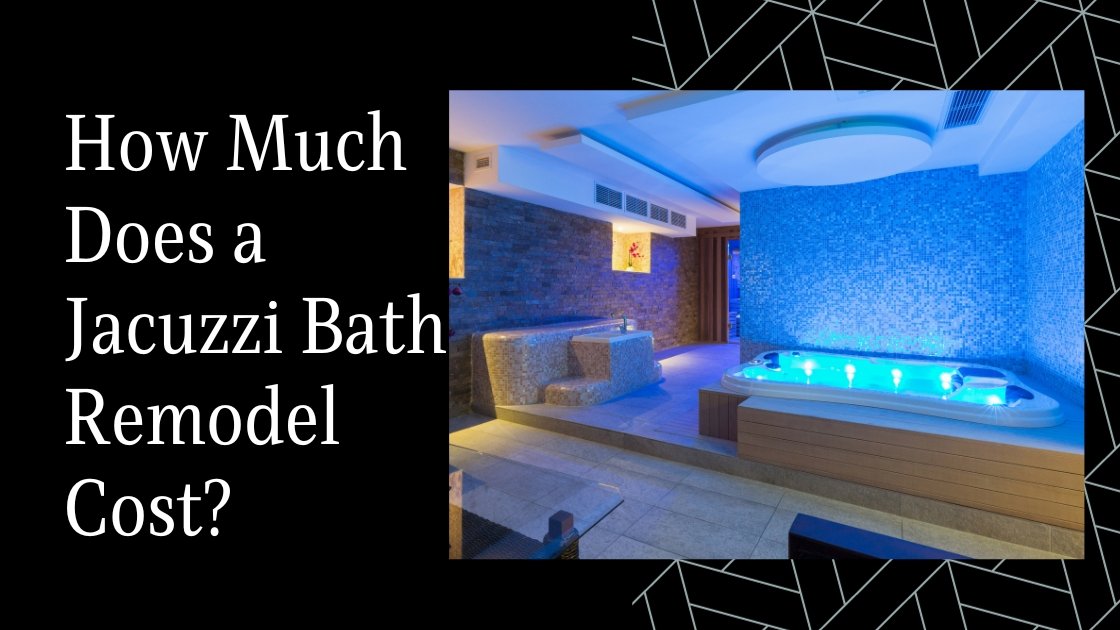If you’re considering remodeling your bathroom and incorporating a luxurious Jacuzzi bath, you’re probably wondering about the cost. Fear not as we have put together this comprehensive guide to help you navigate the pricing landscape.
While Jacuzzi baths can be a significant investment, the benefits of creating an at-home spa-like experience are well worth it.
In this article, we will explore the factors that influence the cost of a Jacuzzi bath remodel, the different types of Jacuzzi baths available, and the materials used in their construction. Additionally, we will provide practical tips for budget-friendly remodels and financing options to consider.
Types of Jacuzzi Baths
When it comes to Jacuzzi bath remodels, choosing the right type of tub is crucial. There are several types of Jacuzzi baths available in the market today, each with its unique features and price point. Here are some popular types of Jacuzzi baths:
Freestanding Tubs
Freestanding Jacuzzi tubs are standalone models that can be placed anywhere in the bathroom. These tubs are popular for their modern and sleek design and are available in various shapes and sizes. They can be made of different materials such as acrylic, fiberglass, and cast iron, making them a versatile option for any bathroom.
Built-In Tubs
Built-in Jacuzzi tubs are installed into an alcove or corner of the bathroom, making them a great option for those with limited space. These tubs are typically deeper and offer more built-in features such as jets and lighting. They are available in various materials, making them a good option for those who want to customize their tub to match their bathroom.
Drop-In Tubs
Drop-in Jacuzzi tubs are installed into a platform or deck, giving them a seamless look with the surrounding area. These tubs are popular for their versatility and can be made of different materials such as acrylic, fiberglass, and cast iron. They are available in various sizes and shapes, making them a good option for those who want to match their tub to their bathroom’s layout.
Corner Tubs
Corner Jacuzzi tubs are designed to fit into a corner of the bathroom, making them a great option for those with limited space. These tubs are often deeper and have built-in features such as jets and lighting. They are available in different materials, making them a good option for those who want to customize their tub to match their bathroom’s style.
Walk-In Tubs
Walk-in Jacuzzi tubs are designed for people with mobility issues or disabilities. These tubs have an easy-access door and built-in safety features such as grab bars and anti-slip surfaces. Walk-in Jacuzzi tubs are available in various sizes and shapes, making them a good option for any bathroom.
Tips for Budget-Friendly Jacuzzi Bath Remodels
Remodeling your bathroom can be pricey, but don’t let that discourage you from creating the relaxing Jacuzzi bath of your dreams. Here are some tips to help you stay within your budget:
1. Stick to a Plan
Before starting your Jacuzzi bath remodel, create a detailed plan and budget. Determine what features you want in your new bathroom and prioritize them. This way, you can focus your spending on the most important items and avoid overspending on unnecessary features.
2. Consider Alternative Materials
While high-end materials like marble or granite may look stunning, they can also be quite expensive. Consider alternative materials that mimic the look of the more expensive options. For example, porcelain tiles can give the appearance of marble without the hefty price tag.
3. Upgrade What You Already Have
If your budget is tight, consider upgrading what’s already in your bathroom. A fresh coat of paint or new fixtures can make a big difference without a major expense.
4. DIY Where Possible
Doing some of the work yourself can save you a significant amount of money. Simple tasks like painting or replacing fixtures are easy enough to do on your own, even if you don’t have much experience with home improvement projects.
5. Shop Around
Don’t settle for the first contractor or supplier you come across. Shop around and compare prices to ensure you’re getting a good deal. Don’t be afraid to negotiate prices or ask for discounts.
6. Keep Plumbing in Place
Moving plumbing fixtures can be costly, so try to keep them in their current location as much as possible. This can save you money on labor costs and materials.
7. Invest in Energy Efficiency
Consider investing in energy-efficient options like LED lighting or low-flow faucets. While they may cost a bit more upfront, they can save you money in the long run by reducing your energy and water bills.
8. Don’t Sacrifice Safety
While it’s important to save money, don’t sacrifice safety. Ensure that any electrical or plumbing work is done by a licensed professional to avoid potential safety hazards.
By following these tips, you can create a stunning Jacuzzi bath remodel that fits within your budget. Remember to plan, shop around, and prioritize the features that matter most to you.
Conclusion
Understanding the costs associated with a Jacuzzi bath remodel is essential for effective planning and successful execution of your project. From factoring in bathroom size to considering materials, additional features, and labor expenses, a comprehensive approach ensures a realistic budget. Whether you choose to enlist the expertise of professionals or embark on a DIY journey, having a clear understanding of your financial commitments is key. If you’re seeking reliable guidance and skilled craftsmanship for your Jacuzzi bath remodel in Westerville, OH, consider reaching out to our trusted Bathroom Remodel Contractors in Westerville, OH. They bring expertise, local knowledge, and a commitment to turning your vision into reality. Contact us today to begin your transformative bathroom renovation journey.
